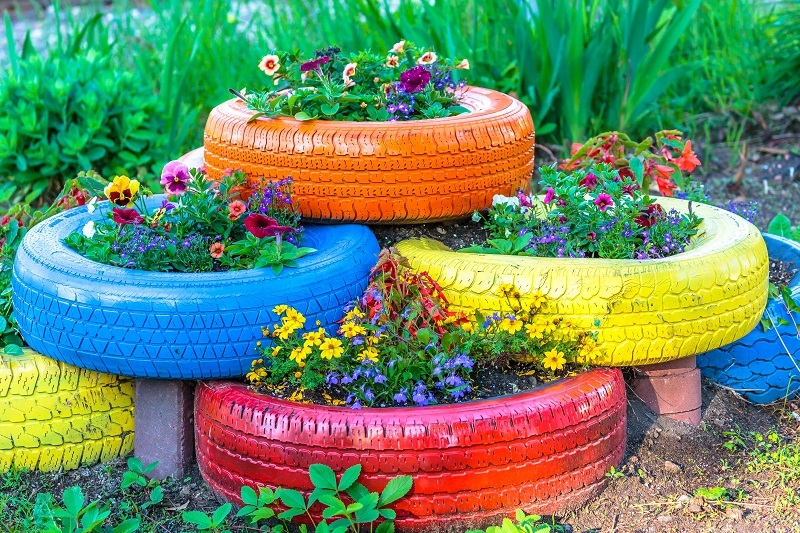Intriguing tulip tales: 7 facts you didn't expect
Posted on 02/09/2025

Intriguing Tulip Tales: 7 Unbelievable Facts You Didn't Expect
When you think of tulips, you might picture stunning spring gardens or iconic scenes from the Netherlands. But did you know tulips are entwined with bizarre history, cultural significance, and fascinating scientific insights? Join us as we uncover intriguing tulip tales with these 7 unexpected facts--proving tulips are much more than just a pretty flower.
The Alluring History of Tulips
Tulips have a history steeped in intrigue, romance, and sometimes, outright obsession. Before exploring our seven amazing facts, let's set the stage with a brief look at how tulips captivated the world.
- Native Origins: Tulips originally grew wild in the mountainous regions of Central Asia and were first cultivated by the Ottomans long before reaching Dutch soil.
- Symbolic Power: In Turkey, tulips became symbols of paradise on earth. The word "tulip" is thought to derive from the Persian word for "turban"--a nod to the flower's resemblance to the headwear.
- Spread Across Europe: Tulips made their way to Europe in the 16th century thanks to botanist Carolus Clusius, whose garden at Leiden University in the Netherlands became the epicenter of the first major tulip craze.
7 Tulip Facts You Never Expected
Without further ado, let's dive deep into the intriguing tales of tulips. Each of these seven surprising facts reveals a unique aspect of this beloved bloom, from economic madness to unexpected adaptability.
1. The World's First Economic Bubble: Tulip Mania of 1637
Tulip mania, often considered the first recorded economic bubble, swept across the Netherlands during the early 17th century. This financial craze had everyday citizens, merchants, and aristocrats frantically trading tulip bulbs--for prices that, at times, exceeded the cost of a house!
- At the peak of tulip mania, single rare bulbs sold for as much as 10 times the annual income of skilled laborers.
- The term "Tulip Fever" describes the frenzy with which people speculated on tulip prices, leading to rampant profiteering before the inevitable crash in February 1637.
- After the bubble burst, fortunes were lost, and the economic impact became immortalized as a cautionary tale of speculation gone awry.
Did you expect tulips to change the Dutch economy forever?
2. Tulips: The Muse of Artists and Poets
Tulip flowers have inspired countless artists, poets, and designers. Their vibrant colors and unique shapes are featured prominently in European paintings of the Golden Age and Persian poetry.
- The famous still-life tulip paintings by Dutch Masters like Rachel Ruysch and Jan Davidsz. de Heem rendered these blooms in meticulous detail, reflecting their status as luxury items.
- In Turkish poetry and design, tulips symbolize perfection and beauty. The stylized "Ottoman tulip" motif still appears on everything from textiles to ceramics.
Few flowers have left such a lasting legacy in art and literature as the tulip.
3. The Survival Tactics of Wild Tulips
Not all tulip tales revolve around gardens or markets. The ecology of wild tulips harbors equally surprising stories. Many tulip species thrive in harsh environments, evolving remarkable adaptations:
- Bulb Storage: Tulip bulbs store water and nutrients, allowing plants to survive long droughts in their native Central Asian habitat.
- Early Blooming: Some species burst into flower as snow melts, capitalizing on brief spring sunlight before neighboring plants leaf out and cast shade.
- Subtle Camouflage: In the wild, tulip petals may be less flamboyant than cultivated types, helping them blend into rocky landscapes and avoid herbivores.
Tulips aren't just beautiful - they're resilient survivors!
4. Over 3,000 Tulip Varieties--And Counting!
Did you know there are over 3,000 registered tulip varieties? Tulip breeding is an art and science that's been practiced for centuries, resulting in a dazzling array of forms, colors, and flower shapes.
- Color Explosion: Tulips come in nearly every color--except true blue! Some varieties feature streaked or variegated petals thanks to natural and human-made hybrids.
- Exotic Forms: Beyond the classic cup-shaped tulip, you'll find fringed, parrot, lily-flowered, and even double tulip forms.
- Annual Innovations: Every year, breeders introduce new tulip varieties, continuing the cycle of tulip fascination across the globe.
The next stunning tulip you see may be a very recent invention!
5. Tulips: More Than Just Ornamental--They're Edible!
Here's a tulip tale you may not have heard: tulip petals are technically edible, and hungry people have, at times, relied on them for survival.
- Dutch Hunger Winter: During World War II's "Hunger Winter," the Dutch faced such severe food shortages that many people ate boiled tulip bulbs and petals. While not especially tasty, they supplied vital nutrition.
- Modern Cuisine: Today, certain chefs and foragers incorporate tulip petals (free of pesticides) in salads, desserts, and as garnishes. The flavor can be subtle or slightly bitter depending on the variety.
- Important! Never eat garden tulip bulbs or petals unless you're sure of their identity and that they're untreated, as some may be toxic if consumed improperly.
Who knew tulips had a role to play on the dinner table?
6. Tulips Unite Nations: Celebrations and Festivals Worldwide
Tulip festivals are spectacular events celebrated in countries far beyond the Netherlands:
- Canada's Tulip Festival: Canada's capital, Ottawa, hosts a massive annual tulip festival that dates back to World War II, when the Dutch royal family sent 100,000 tulip bulbs to thank Canadians for sheltering Princess Juliana during the war.
- Turkey's Istanbul Tulip Festival: Each spring, Istanbul's gardens and parks bloom with millions of tulips, commemorating the country's deep historic ties to the flower--a nod to tulip tales rooted in Ottoman history.
- American Celebrations: From Holland, Michigan, to Skagit Valley, Washington, U.S. regions with Dutch roots celebrate tulip season with parades, markets, and stunning floral displays.
The universal appeal of tulips brings people together in celebration of beauty and heritage.
7. Tulips in Space: Blooming Among the Stars
One of the most recent tulip tales extraterrestrial explorers is out of this world--literally! Scientists have experimented with growing tulips on the International Space Station (ISS).
- Space Blooms: Tulip bulbs carried aboard the ISS have successfully sprouted and flowered, helping researchers study plant development and life cycles in microgravity conditions.
- Astronaut Morale: The bright blooms provide emotional and psychological comfort for crew members living in confined quarters far from Earth.
- Future Farming: These experiments pave the way for future long-term cultivation of plants--including food crops--far from our home planet.
Who would have guessed tulips made the leap from earthly gardens to cosmic horizons?
Bonus: More Fun Tulip Tales & Trivia
- The world's largest tulip garden, Keukenhof in the Netherlands, features over 7 million tulip bulbs and attracts more than a million visitors every spring.
- "Tulip breaking virus," a 17th-century plant disease, caused dramatic feathering patterns in petals--sparking some of the highest prices paid during tulip mania.
- Some ancient superstitions claimed that carrying a white tulip would protect you from thunder and lightning!
The Enduring Influence of Tulips
The many tales of tulips show how deeply intertwined this flower is with human history, art, economics, and even survival. Whether you're dazzled by their beauty, intrigued by their history, or inspired by their adaptability, tulips have earned their spot as one of the planet's most fascinating blooms.
Ready to explore tulip tales firsthand?
Next spring, visit a local festival, plant some bulbs, or read up on their rich global heritage. Who knows what new tulip stories await discovery?
Frequently Asked Questions about Tulips
-
What is tulip mania and why is it important?
Tulip mania was a period of speculative frenzy over tulip bulbs in 17th-century Holland, often considered the first recorded speculative bubble. It's a classic example of how markets can be driven by human emotions and speculation, not just value. -
Where do tulips originate from?
Tulips are native to Central Asia and were cultivated by the Ottoman Empire centuries before spreading to Europe. -
How many tulip varieties exist today?
There are over 3,000 registered varieties globally, with new ones created every year by breeders. -
Can you eat tulip bulbs or petals?
Yes, tulip petals (untreated by chemicals) are sometimes used in modern cuisine. However, only certain parts and varieties are safe, so always consult an expert before consumption.

Conclusion: The Intrigue of Tulips Never Ends
Tulips are much more than a symbol of spring--they're a window into our shared history, creativity, and dreams for the future. With their vibrant colors, complex stories, and enduring allure, tulips truly deserve their spot in the world's gardens and imaginations. If you want to learn more about intriguing tulip tales, keep exploring--the world of tulips is as colorful as the flowers themselves!
Latest Posts
Peony Flowers and Their Colors: A Symbolic Journey
Intriguing tulip tales: 7 facts you didn't expect
Transform your cut flowers into long-lasting beauty






